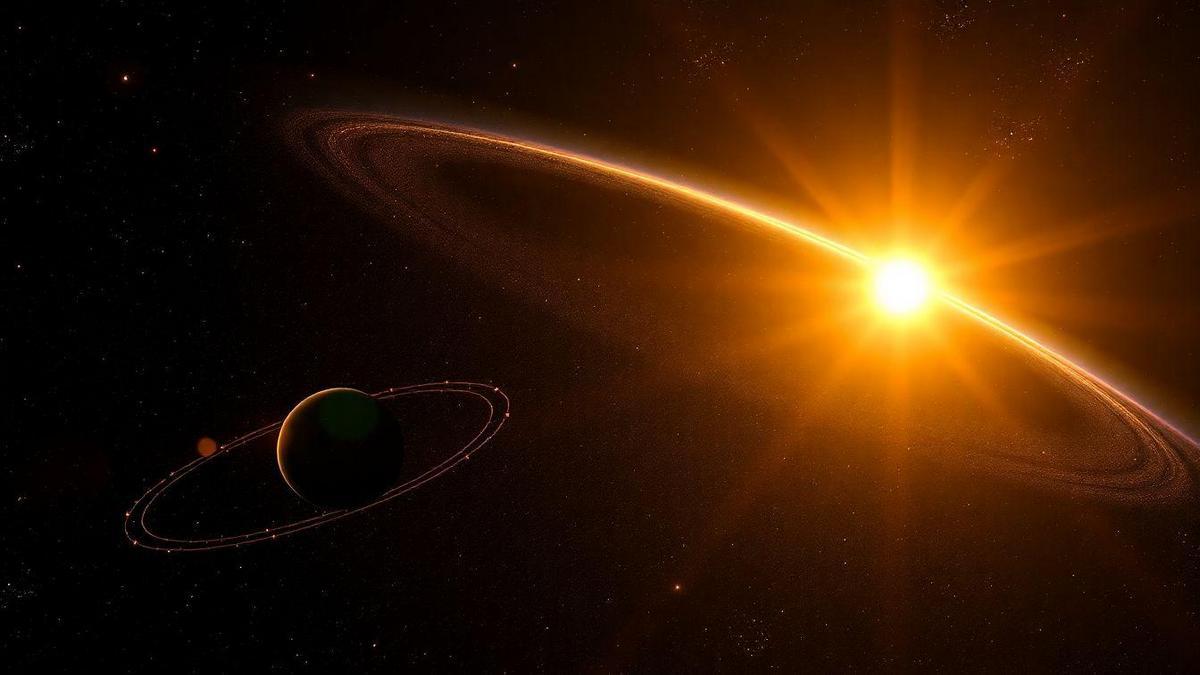
The Kuiper Belt is a region of the solar system that extends beyond Neptune’s orbit, composed primarily of small celestial bodies, including asteroids and comets. This belt is one of the most fascinating elements of modern astronomy, as it serves as a primordial reservoir of material that never coalesced to form planets. Understanding the Kuiper Belt is essential to decoding the history of the solar system’s formation and the evolution of the planets we know today.
In addition to being an intriguing field of study, the Kuiper Belt offers a unique window into the solar system’s past. The objects that make up this belt are considered remnants from the solar system’s formation, and studying them can provide valuable insights into the conditions that prevailed when the planets were forming. By exploring this region, astronomers can learn more about the origin of our solar system, as well as about other planetary systems developing throughout our galaxy.
How Kuiper Belt Objects Work and How the Belt Formed
Objects in the Kuiper Belt, also known as KBOs (Kuiper Belt Objects), are primarily made of ice, rock, and other primordial materials. They orbit the Sun in elliptical paths and, in many cases, have orbits inclined relative to the plane of the solar system. These objects are believed to be remnants of the solar nebula—the cloud of gas and dust that gave birth to the solar system about 4.6 billion years ago. During the system’s formation, the gravity of the Sun and the giant planets like Jupiter and Neptune influenced the distribution of this material, resulting in the formation of the Kuiper Belt.
The formation of the Kuiper Belt was a complex process that occurred in several stages. Initially, the solar nebula began to condense, forming dust grains that collided and stuck together to create larger bodies. Over time, these bodies became planetesimals, the building blocks of planets. However, while the inner planets were forming and growing, the gravity of the gas giants disrupted the orbits of planetesimals in the outer regions, preventing them from merging into a large planet. This led to the creation of a vast region of small bodies, now known as the Kuiper Belt.
KBOs show remarkable diversity in size, shape, and composition. Some are relatively large, like Pluto, while others are small and irregular. This diversity reflects the different conditions and processes that occurred during the solar system’s formation. Many of these objects also have unique features, such as rings, moons, or even thin atmospheres. The complexity of KBOs provides a rich source of data for scientists seeking to understand the solar system’s evolution.
The dynamics of the Kuiper Belt are also influenced by gravitational interactions with the giant planets. Neptune’s gravity, for example, can disturb the orbits of KBOs, causing changes in their trajectories or even collisions. These interactions not only shape the structure of the Kuiper Belt but can also send some objects toward the inner solar system, where they may become comets. Thus, studying Kuiper Belt objects is not only about understanding their formation, but also how they interact with and influence the solar system as a whole.

Advantages of Understanding the Formation of the Kuiper Belt
Understanding how the Kuiper Belt formed offers several benefits for astronomy and our comprehension of the solar system. First, studying KBOs provides valuable insight into the initial conditions of the solar nebula. These objects are considered cosmic fossils, preserving information about the early chemistry and physics of the solar system. By analyzing the composition and structure of KBOs, scientists can reconstruct the history of planetary formation and evolution over billions of years.
Additionally, research on the Kuiper Belt can help clarify the gravitational dynamics of the solar system. The interaction between the giant planets and KBOs is an active field of study that can reveal how gravity shaped the architecture of the solar system. This understanding is crucial for tracing the evolutionary history of the system and may provide clues about how other planetary systems formed in our galaxy. By observing how KBOs behave under planetary influence, scientists can develop more accurate models of planetary evolution.
Another important aspect is the connection between Kuiper Belt objects and comets. Many comets that visit the inner solar system originate from the Kuiper Belt. By studying these objects, scientists can learn more about comet composition and how they may have influenced Earth and other planets throughout history. This is especially relevant when considering the hypothesis that comets may have delivered water and organic compounds to Earth, potentially contributing to the origin of life.
Finally, exploring the Kuiper Belt advances technology and observational methods in astronomy. Space missions that aim to study KBOs, such as the New Horizons mission, expand our knowledge of deep space exploration and telescope capabilities. These technological innovations benefit not only astronomy but also have applications in other areas of science and industry. Therefore, researching the Kuiper Belt is not just a matter of scientific curiosity—it is also a chance to push the boundaries of human knowledge.
How the Kuiper Belt Formed and Its Characteristics
The formation of the Kuiper Belt is closely linked to the history of the solar system. After the Sun formed, the solar nebula began to condense and create planets. During this process, the giant planets like Jupiter and Neptune played a crucial role in shaping the dynamics of the outer solar system. The gravity of these planets disrupted the orbits of planetesimals, preventing them from merging into a large planet beyond Neptune. As a result, these planetesimals became the KBOs we know today.
KBOs are a diverse collection of celestial bodies, ranging in size from tiny dust grains to dwarf planets like Pluto. Their composition is predominantly ice, rock, and volatile compounds such as methane and ammonia. This material diversity reflects the chemical variations that existed in the early solar nebula. In addition, many KBOs have unique features such as rings and moons, which make them especially interesting to scientists.
The structure of the Kuiper Belt is complex and varied. KBOs are distributed across a region extending from about 30 to 55 astronomical units from the Sun. This region is denser in certain areas, where groups of objects share similar orbital characteristics. Some KBOs have inclined or eccentric orbits, shaped by gravitational interactions with the giant planets. These interactions influence not only KBO orbits but also the overall structure of the Kuiper Belt.
Research on the Kuiper Belt remains an area of intense scientific interest. Exploring these distant objects not only expands our understanding of the solar system’s formation but may also lead to surprising discoveries about the nature of the universe.

Did You Enjoy Learning How the Kuiper Belt Formed?
The Kuiper Belt is one of the solar system’s most intriguing mysteries, and understanding its formation is key to deciphering the history of our planet and its neighbors. The diversity and complexity of the objects it contains reveal much about the primordial conditions that shaped our system.
If you found this topic fascinating, keep exploring the universe through astronomy. There’s always more to learn about the secrets the cosmos holds—and how they shape our understanding of the world around us.
Frequently Asked Questions
How did the Kuiper Belt form?
The Kuiper Belt formed from material that did not clump together to form planets. It is made of leftover debris from the formation of the solar system.
What objects are found in the Kuiper Belt?
The Kuiper Belt contains many objects, such as asteroids and comets. Dwarf planets like Pluto are also part of this group.
Is the Kuiper Belt important to us?
Yes! It helps us understand how our solar system formed. It’s like a fossil that tells the story of the solar system’s early days.
How does the Kuiper Belt compare to the asteroid belt?
The asteroid belt lies between Mars and Jupiter. In contrast, the Kuiper Belt is beyond Neptune and is much larger and more populated with objects.
Can we travel to the Kuiper Belt?
Traveling to the Kuiper Belt is still a major challenge. But space missions are being planned, and who knows what the future will bring!

